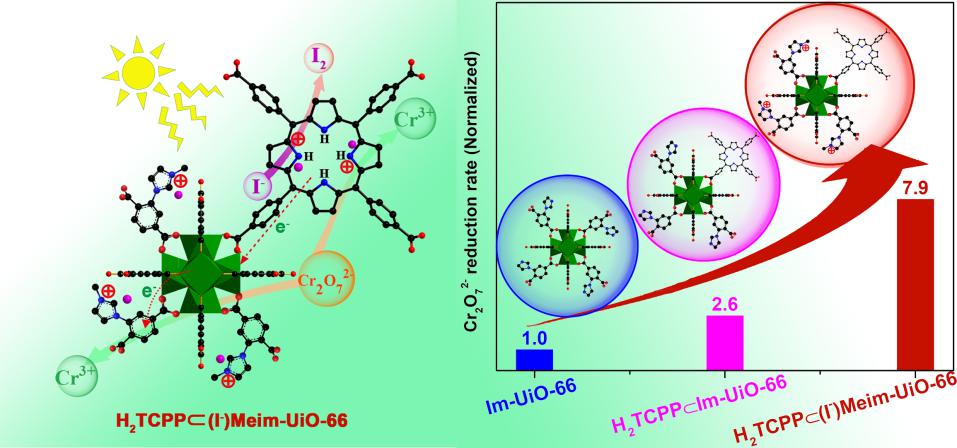The removal of toxic Cr(VI) ions from industry wastewater is necessary because they can cause severe damage to organisms and environment.
The photoreduction of Cr(VI) to Cr(III) driven by visible-light is a more energy-efficient and environmentally friendly approach compared with other techniques including ion exchange, chemical precipitation, membrane filtration, reverse osmosis and adsorption. However, most of photocatalysts show relative low activities due to low Cr(VI) adsorption rate/capacity, weak light harvesting efficiency, and/or poor electronic utilization efficiency.
In a study published in Applied Catalysis B: Environmental, a research group led by Prof. CAO Rong from Fujian Institute of Research on the Structure of Matter (FJIRSM) of the Chinese Academy of Sciences utilized a sequential mixed-ligand and ionization strategy to fabricate a multivariate metal-organic framework(MOF).
The framework integrates highly visible-light photosensitive units and strong Cr2O72- adsorptive cationic struts into one single phase to improve the photoreduction of Cr2O72-.
Researchers firstly incorporated porphyrin as the intense visible-light sensitization unit into a Zr-MOF via mixed-ligand strategy, which effectively expanded the spectral response from 425 nm to 750 nm.
They found that the porphyrin incorporated MOF was further ionized by the reaction with methyl iodide to afford a cationic H2TCPPì(I-)Meim-UiO-66, which could enhance the adsorption of Cr2O72- and desorption of the Cr3+ due to the electrostatic effect.
The synergistic effect of strong adsorption of Cr2O72- and efficient utilization of light endowed H2TCPPì(I-)Meim-UiO-66 with highly efficient photoreduction activity toward toxic Cr2O72- under visible light in a rate of 13.3 mgCr(VI)/gcatalyst/min, much higher than the reported MOF-based photocatalysts including typical NH2-UiO-66 (0.2 mgCr(VI)/gcatalyst/min) and NH2-MIL-125 (1.6 mgCr(VI)/gcatalyst/min).
Based on the results from time-resolved photoluminescence spectra, electron spin resonance, and theoretical calculation etc., researchers proposed the photoreduction mechanism of Cr2O72- over H2TCPPì(I-)Meim-UiO-66.

The brief fabrication process of cationic multivariate metal-organic framework.(Image by Prof. CAO’s Group)
Contact:
Prof. CAO Rong
Fujian Institute of Research on the Structure of Matter
Chinese Academy of Sciences
E-mail: rcao@fjirsm.ac.cn